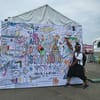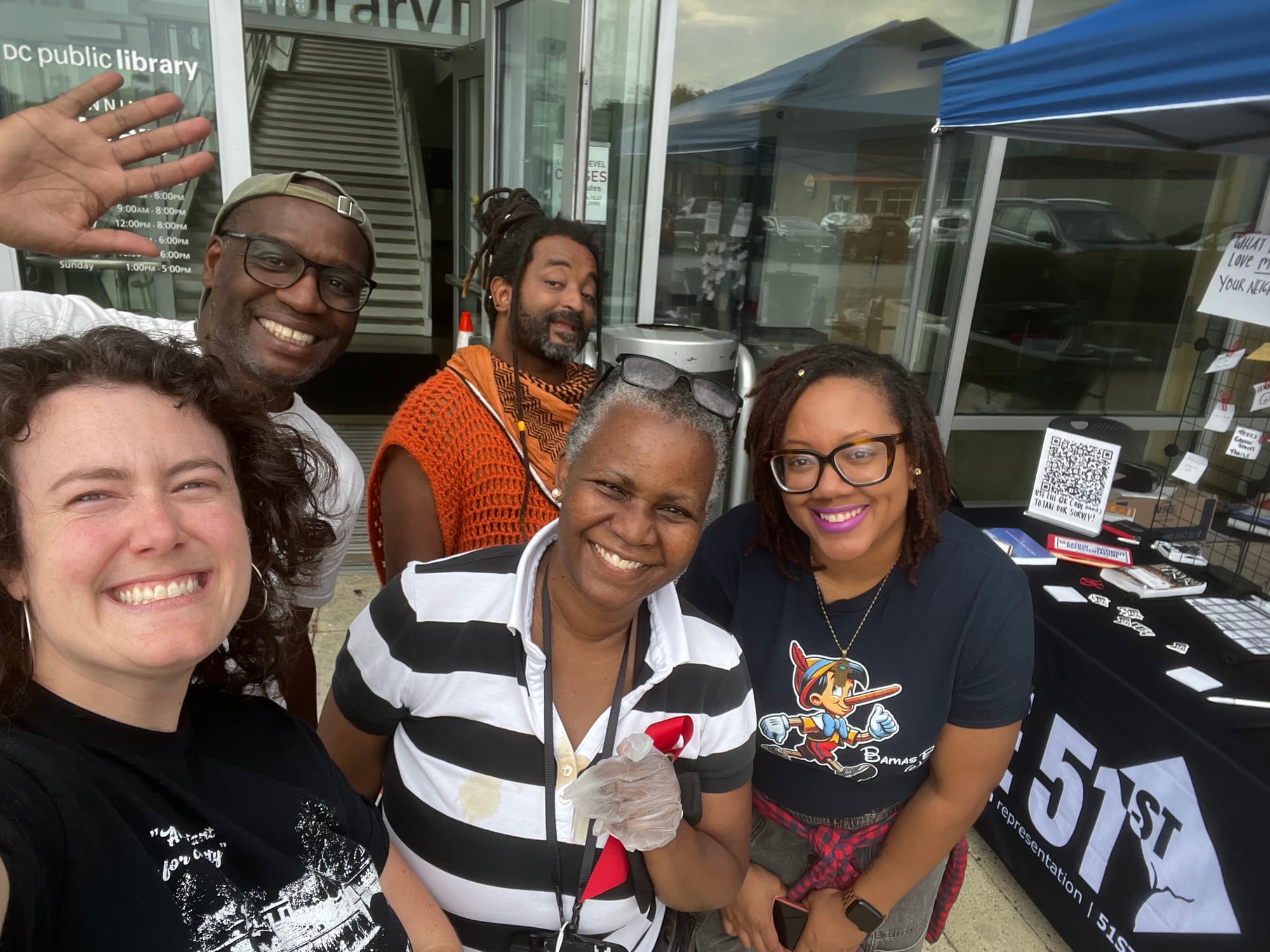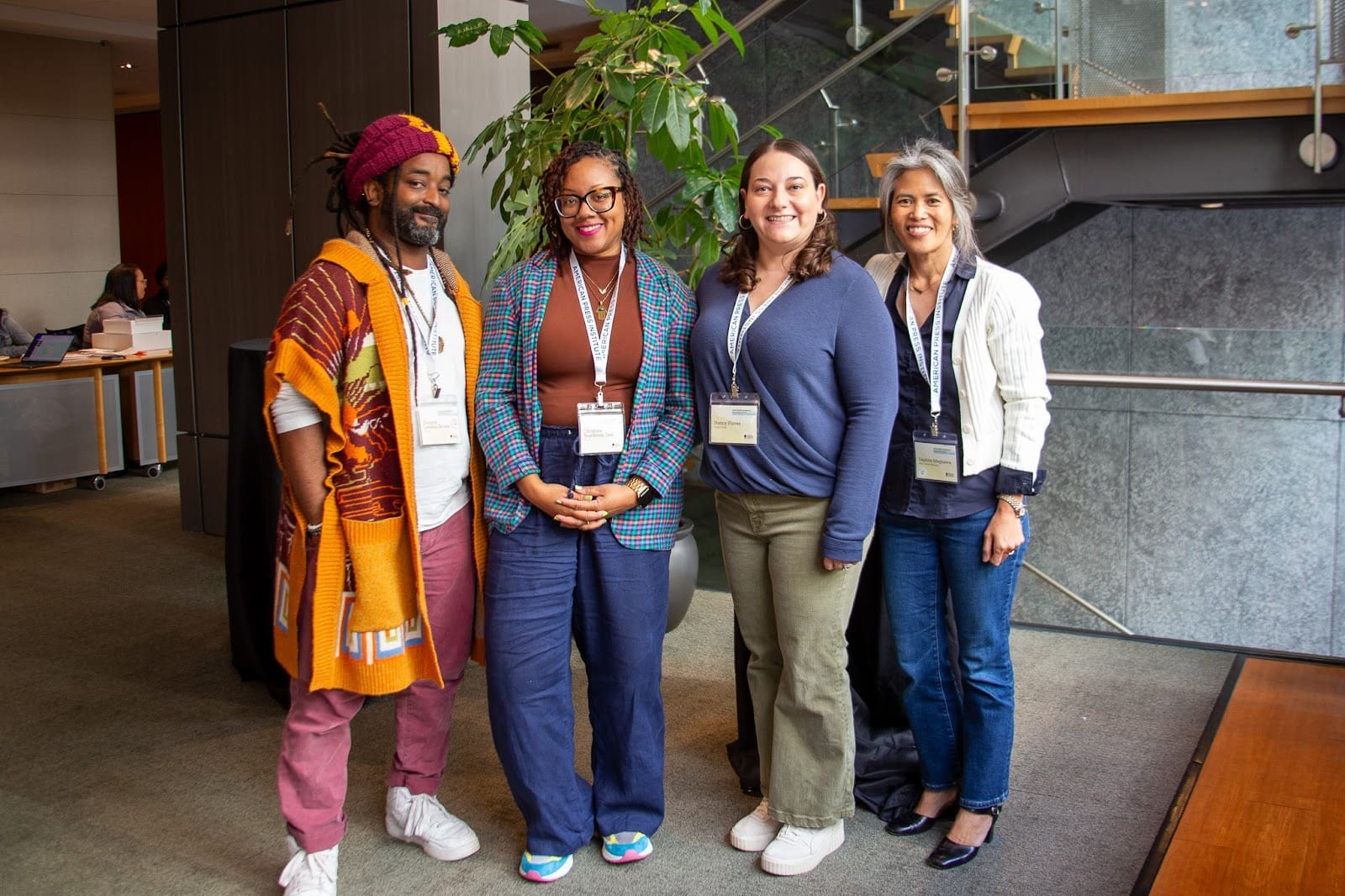The unexpected costs of running The 51st
So you're telling me ... it's more expensive to be a newsroom in D.C.?
Dwayne Lawson-Brown has been learning about longtime residents’ information needs — and, in the process, about their own relationship with local news.

As an elder millennial, my relationship with news is a mixed bag, influenced as much by the major headlines of my lifetime as by the absence of stories that reflect my community. I remember the sensation that was the OJ Simpson trial — my eighth-grade algebra teacher stopped class for us to watch the verdict. My skater friends and I watched media coverage on September 11 after the attacks at the Pentagon, so close to home. Ja Rule, of all people, was on MTV waxing poetic and trying to piece together what just happened.
I followed coverage of folks falling victim to “the DC Sniper,” then I dashed to my bus and headed to work. I remember the hope of the 2008 election, the whiplash of the 2016 election, and the terror of the 2024 election — the media guided me through it all.
On occasion, I've even been the subject of news. I’ve appeared on local broadcasts discussing upcoming events and topics like HIV testing for youth, and I’ve been featured in print media for my artistic ventures.
I recognized the need for people like me — Black D.C. natives — to be represented in news media. But I never viewed myself as worthy of space in the newsroom. I was a guest, valued for the moment, but “real” news was to be handled by the professionals. I never felt “educated enough” to run with journalists.
In May 2025, I was approached by The 51st’s Executive Editor, Christina Sturdivant Sani, about hosting an event in celebration of D.C. Natives’ Day. “Ask a DC Native, Live!” would be a trivia game show where each topic related to D.C.’s history, culture, and people. I worked with Christina on prior events through her company, Black.Native.Creative, but The 51st was new to me. I was intrigued by the idea of “news as an experience” instead of solely providing stories on a page. The event would create conversations about D.C. experiences in a fun and interactive environment.
I hosted the event. It was a blast. The venue, the audience, the contestants — everyone wanted more trivia. But I wanted something else. I didn't want to be a guest, hosting for this group; I wanted to be part of the team. I saw news in action, people building something that felt organic and focused on integrating the community, not just reflecting it via news coverage.
I asked how I could contribute more, maybe a photo or a poem. Christina told me about the Community Connectors program that The 51st recently launched with George Kevin Jordan in Ward 7. She wanted to expand the program to include D.C. natives and asked me to lead it.

The Community Connector position serves a few roles: to provide in-person awareness at events, conduct audience surveys that inform The 51st’s news coverage, and connect with communities often overlooked by newsrooms.
As the Community Connector for D.C. Natives, I pitched a few ideas, including interviewing D.C. natives on camera and featuring them on social media. I wanted to highlight their upbringing, how they are showing up in their communities, and what they wish for our city’s future. I would approach people and their stories from a place of lived experiences and joy.
When speaking with Paul Spires, I was catching up with an old friend while learning about his success in the arts and local politics. When interviewing Shehariah Johnson, I highlighted a hometown hero and the organization she created to serve her neighborhood. When speaking with Aja Moon, I got to learn how art can take someone from humble beginnings in Northeast, D.C. to galleries around the world.
In doing this work, I’ve had a few revelations.
First, D.C. natives are living newsworthy lives that are not being recognized by traditional news media. Often, “the story” is birthed from our trauma — how we had to drag ourselves out of the mud, pull ourselves up by the bootstraps, and barely make it to this day. Creating these videos granted me the opportunity to de-center trauma and work from a place of celebrating communal success.
Another assignment was to table at events that D.C. natives would likely attend. This led me to the National Cannabis Festival, DMV Made Festival, Spit Dat DC, District of Culture Festival, and Jazzy Sundays in Anacostia. I’ve conducted surveys asking D.C. natives where they get their news, what coverage they would like to see, and what gaps are missing in local news coverage.
My second revelation: People want news that directly connects to their lifestyles. Many of the D.C. natives I spoke to wanted more news about gentrification and displacement, and how we can make housing more affordable. Community history and culture, and physical and mental health, were also on their wish lists. As was transportation, which is fitting as Metro recently revamped its bus lines. In my role, I get to be an ear to my community and help The 51st show up authentically by employing people who can relate to their target audiences.
We are at a point of unprecedented misinformation, which leads me to my last revelation: Local news should be a trusted source for District residents.
Between the influence of billionaire newsroom funders, AI-powered deep fakes, and “alternative facts” shared on social media, it has become increasingly difficult to know what is happening in the world. As people have learned of my involvement with The 51st, I've become a reliable, trusted source for accurate news.
For example, at Spit Dat DC — the city’s longest-running open mic — I pointed people to The 51st’s articles about the National Guard and ICE deployment. This helped empower audience members to share information, not fear.
And at September’s Ask a DC Native, Live!, which was themed around Resistance, we covered topics like D.C. statehood and historic protests in the city, providing context for what we’re experiencing now while pointing the audience towards important resources.

This work is fulfilling. I'm helping D.C. residents navigate the constant stream of information that we face daily. My voice is being used for good. But along the way, I’ve still questioned my place in journalism.
In August, Christina and I were invited to attend the American Press Institute’s Local News Summit on Inclusion, Belonging, and Local Leadership. During this two-day gathering, we heard from newsroom leaders working to be more inclusive of communities across the country. In Idaho, they are hiring high schoolers to cover news in their native languages. In Pittsburgh, they are developing an advisory board with folks from every part of the community to create a feedback loop of action, coverage, and distribution. We listened, learned, took notes, and discussed possible options for our newsroom.
We were also affirmed.
Christina and I shared about Ask A DC Native, Live! and the power of trusting community members to create gateways for community integration and fun in the news. We were recognized for building something that other newsrooms are trying to figure out.
And I finally got to see myself as more than a guest in the news space. I am an example that District residents, especially D.C. natives, belong in these spaces. Our stories are important, and we should be the people telling them. Newsrooms across the country are beside us, figuring things out, and we can learn from each other’s experiences.
Yes, my relationship with the news has been a mixed bag, but I'm glad to know that there is room for me to unpack pieces of myself with The 51st.
With your help, we pursue stories that hold leaders to account, demystify opaque city and civic processes, and celebrate the idiosyncrasies that make us proud to call D.C. home. Put simply, our mission is to make it easier — and more fun — to live in the District. Our members help keep local news free and independent for all: